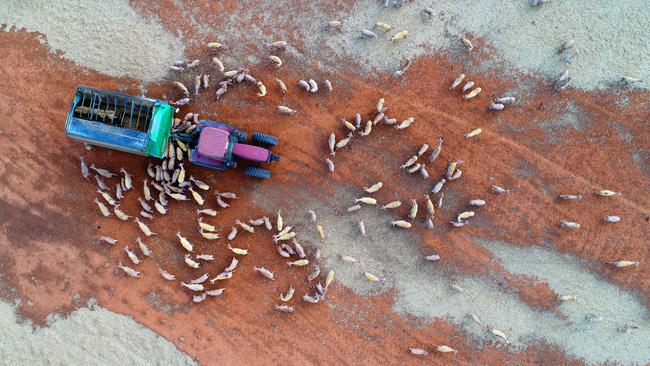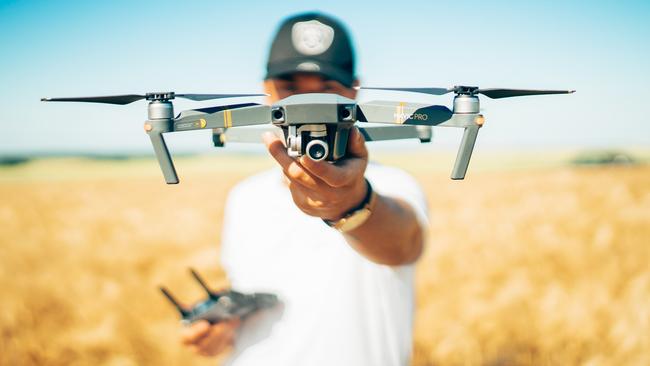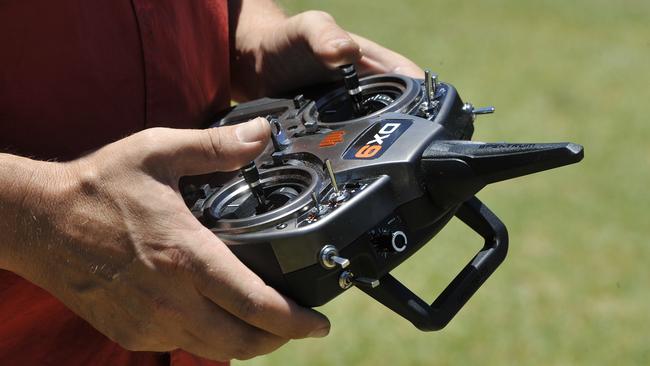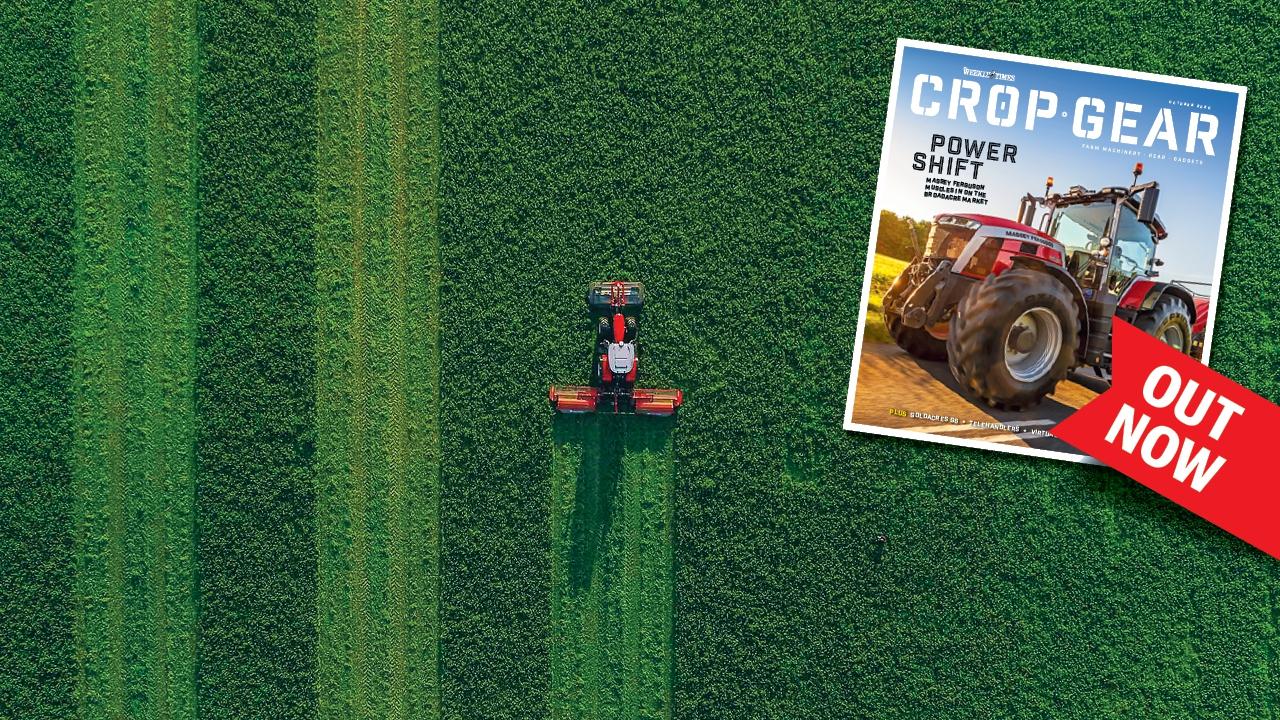What’s the best way to operate a drone on your farm?
Drone data can help boost farm productivity, but who should be the aerial operator? Here’s what you need to know before taking flight.

Unmanned aerial vehicles or remotely piloted aircraft, commonly known as drones, have become popular recreational toys. Aviation authorities estimate there are several hundred thousand drones in use in Australia, most equipped with cameras. But there is a serious side to this form of aviation that offers potential productivity on the farm.
More than 15,000 people have obtained remote pilot licenses to fly them commercially in Australia in the past five years and more than 1500 people or organisations hold remote pilot operator certificates, to run fleets of drones and employ pilots. Farmers in some areas are reporting regular approaches from drone photographers who offer to take pictures of paddocks for a flat fee.
Farmers yearn for useful information about the land they are about to irrigate, harvest, spray, fertilise, sow, graze or rest. If a drone can pinpoint nutrient deficiencies in a paddock by analysing images gathered from above, that offers compelling reasons to send up a drone.
So, should farmers adopt the fly-it-yourself (FIY) approach or call in a fly-in-fly-out (FIFO) subcontractor? Here are some of the choices.

TASKS
FIY
A novice flyer working at home on the farm can gather simple information with a basic RGB (red, green, blue) camera, such as checking fence lines and watering points, counting livestock or taking photographs of the land. By accumulating flying time and experience in interpreting drone data, a farmer can adopt more sophisticated or ambitious flight missions.
FIFO
Specialist drone contractors or agronomists working as field officers for commodity groups will likely have the experience to throw specialist equipment and software at seasonal projects, such as crop health monitoring or the targeted application of herbicide or fertiliser. Some contractors can help with drainage or water reticulation plans for irrigation infrastructure.
COST
FIY
There are $50 drones available, but the cheap units might not be robust enough for frequent outdoor flight and are unlikely to fly far enough or for long enough to be useful on a farm. A mid-range consumer drone weighing less than 2kg, with multiple rotors, could cost $400 to $1500, and be reliable and durable enough to help a farmer learn how to use the equipment and see the tech’s potential. A drone equipped with real-time kinematic, or RTK, positioning – a navigation standard commonly used by tractor-based precision farming systems to ensure accuracy – can cost up to $15,000.
FIFO
The price for a contractor to complete an aerial mission is much like the calculation for any other agricultural contractor. It could be set as an hourly rate or a basic flat fee, with added costs for travel and post-flight data analysis. Drones that operate with small payloads for precision spraying may incur input costs, depending upon each mission. Experienced agricultural aerial contractors are more likely to offer a service that pinpoints information that will help a farmer make a choice on potential productivity of the land and crops being grown.

RULES
FIY
There are exclusions that currently allow people to fly drones weighing less than 2kg or fly over their own land without any licensing or registration required. But these rules are changing, possibly as early as September. CASA encourages all drone owners to subscribe to its mailing lists so operators are aware of rule changes that might come into force. A farmer who might want to obtain a remote pilot licence, which involves theory and practical training from a provider such as a TAFE or flying school. A basic course can cost $2700 to $4000.
FIFO
Fliers with appropriate licences and a RPA operator’s certificate can negotiate dispensations with the aviation community to fly in special circumstances at times and in places that non-registered pilots cannot. Commercial or specialist agronomy fliers will have CASA certification for each type of aircraft they operate, such as fixed wing, multi-rotor copters and aircraft above a certain weight. Professional fliers with an Australian Radio Operators Certificate will be able to communicate with other pilots in the area. CASA also has oversight of aerial mustering and aerial spraying.
ON THE GROUND
FIY
Drone owners must also transport, store and safeguard the drone while it is not in the air, as well recharging batteries or refuelling. More importantly, analysing information from sensors and cameras may be a challenge. If serious about extracting value from a drone, a farmer needs to import data to a computer and know how to interpret it.
FIFO
Specialist aerial agronomy contractors will have a fleet of aerial hardware, but also the specialist software able to make sense of the data. Some data may be able to be exported into farm management software or other third-party programs, or interpreted using a map or spreadsheet, which means the farmer does not necessarily need to own specialist software.

PAYLOADS
FIY
What a farmer deploys on a drone depends on the carrying capacity of the aircraft. Some people might mount a GoPro camera while others stick with equipment tailored for the particular model, so that it can be operated through a single controller and easily pre-programmed to survey a chosen flight path.
FIFO
Insurance broker Osman, which has a large client book of insured drones, says there are commercial drones operating in Australia with payloads valued up to $100,000. Choices include thermal cameras, infra-red cameras, equipment to sample water or drones mounted with micro four thirds digital cameras.
DOB IN A DODGY FLIER
If somebody flies a drone over your land and frightens the livestock, flies at night, flies within 30m of people or directly above people, or is perhaps taking footage of a bushfire or the aftermath of a car crash, the drone operator can be reported to the Civil Aviation Safety Authority, which fields dozens of complaints a month. There are specific rules that recreational and commercial drone fliers must abide by such as having the drone in view at all times and not interfering with emergency services. Fines of up to $1050 per offence can be issued. CASA says if the matter is taken to court, fines could tally up to $10,500. Unsafe drones can be reported online.


